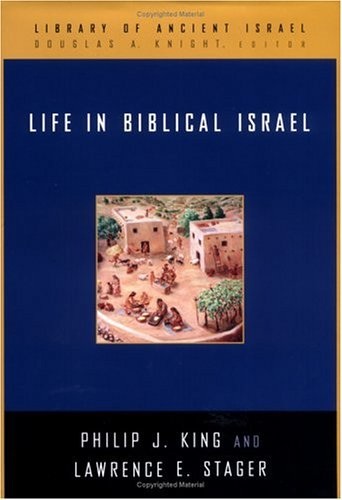










Life in Biblical Israel, despite its conversational tone and appealing visual layout (it contains copious and remarkable photographs, many of them in color), rests on a simple premise: great ideas are as much an expression of a culture as the shape of the pots it uses for wine or the letters it uses for writing. This is the central tenet that undergirds the excellent new volume by L. E. Stager (Harvard) and P. J. King (Boston College). In the case of Biblical Israel, of course, the main artifact bequeathed by the Israelite culture to the modern era is the canon of the Hebrew Scriptures, or Old Testament. The idiom of the texts that comprise the canon, King and Stager argue, is as much rooted in the reality of Iron Age western Asia (1200-540 B.C.E.) as are habits of personal adornment (ingeniously illuminated by the authors) or domestic architecture. Biblical texts, therefore, at once express the culture of the Iron Age which archaeologists can reconstruct and are illuminated by that culture. For readers who recognize the productivity of this dialogue and seek the means to enhance it, they can do no better than acquire this book. Ancient interpreters, beginning with biblical authors themselves (who glossed alien terms of antiquity with ones familiar to their audience) and continuing with such seminal figures as Philo and Origen, wrestled with the language, customs, and manners described in the texts. Why? Because texts are not disembodied, even when long traditions of interpretation continuously make those texts meaningful in new contexts. Thus, for anyone who takes the texts seriously, engagement with them requires engagement with the realia of Biblical Israel, from calendars, to family structure, to the implements of war, and the names of pots (ill. 70a-b). These and many other topics are meticulously presented by King and Stager, with insights that go beyond recitation of the data available in standard reference works (including not a few interesting philological observations about the meaning of Hebrew words). This book, then, presents the highest caliber of scholarship in a package that is readable, enjoyable, and very important. It also demonstrates persuasively that the culture of ancient Israel in the Iron Age II-not in the Persian or Hellenistic periods-was the one in which the greater part of the Hebrew Scriptures was conceived and transmitted.

